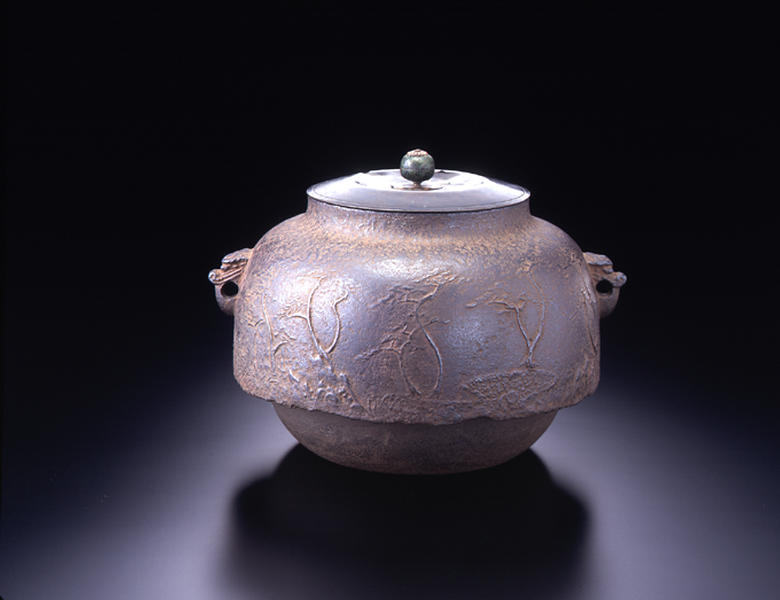芦屋浜松図真形釜
- 福岡県・芦屋
- 室町時代
- 16c
- 鋳鉄製
- H-21.9 D-30
本来は真形釜であったが、底が傷んだため胴の下方を打ち欠き尾垂とし、新たに作った底を嵌め込んでいる。江戸時代の茶人は名釜を大切にするとともに、この打ち欠いた様子にも美を求め「尾垂釜」と呼んだ。この釜は芦屋によく見られる浜松地文の図柄となっている。一般に尾垂釜では裾を霰状にするが、これはうまくいかなかったのか真直に欠いている。
解説(春の玉手箱)
芦屋釜は、鎌倉時代末期から桃山時代の天正年間にかけて福岡県芦屋(現芦屋町遠賀川河口周辺)で作られた釜の総称。この釜の地文の浜松文様は室町時代の典型的な様式で、鐶付の鬼面も比較的強く、よく古式を継承している。なお浜松地文釜の代表作として、重要文化財の芦屋釜(東京国立博物館蔵)があるが、本作の方が浜松地文が少し弱く感じられることから、やや時代の下る作かと推定される。
Catalogue Entry
The designation “Ashiya kettle" refers to kettles made from the end of the Kamakura period through the Tensho era (1573‐92) of the Azuchi‐momoyama period in Ashiya, Fukuoka prefecture (near present‐day Ashiya‐cho, at the mouth of the Ongagawa. This kettle has a pattern of beach pines which is one of the typical forms of decoration on Muromachi period kettles, and here the kantsuki holes for fitting handles to the kettle appear have relatively strong demon mask forms which indicate a careful continuation of older styles. The most important example of a kettle with beach pine motif is a work designated an Important Cultural Property and now in the Tokyo National Museum. The Miho kettle has a slightly weaker rendition of the pine beach motif and can be suggested to bear a date somewhat later than that of the Tokyo National Museum kettle.
